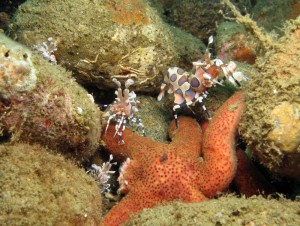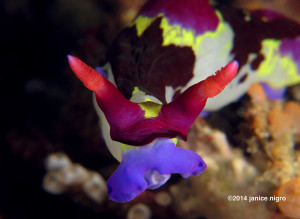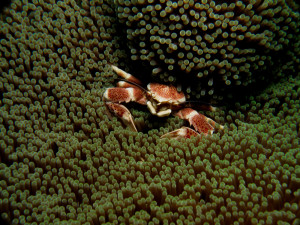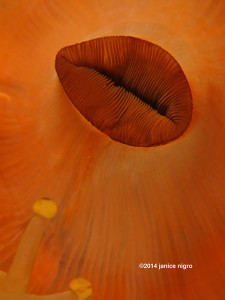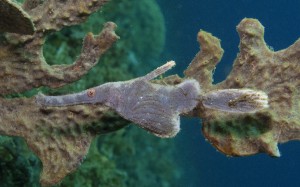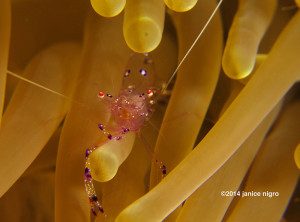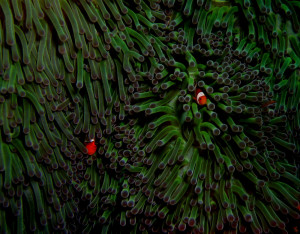Photo / Video News & Reviews
Scuba Diving Made Me An “Artist”
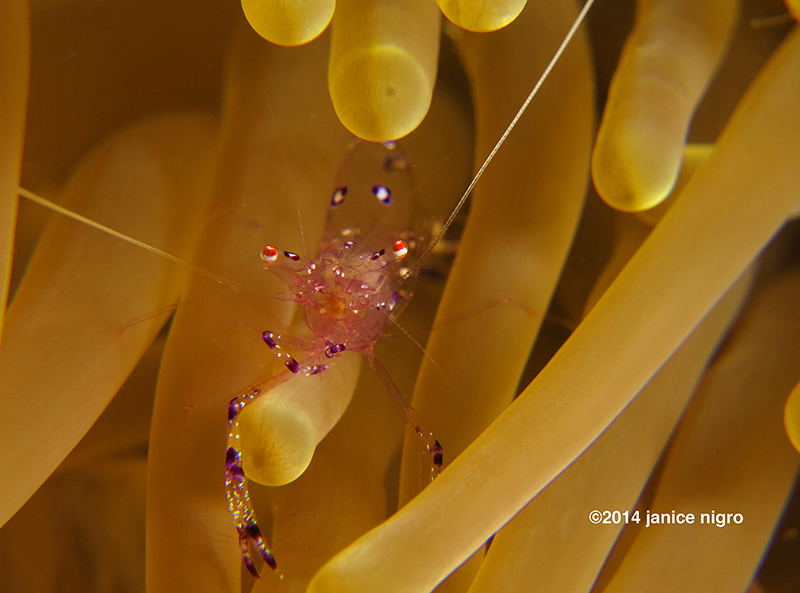
I never took a photo until I went underwater. And when I did, it was a last minute decision. I was on my way to LAX about three hours before my flight to Nadi, Fiji eight years ago, when I stopped by Samy’s Camera in Los Angeles to purchase a camera, but for taking landscape and people photos. I had finally decided that maybe I should take some photos to show people where I was going because the dive destinations were exceptionally beautiful and different. My sales guy made some suggestions based on my initial intentions. Then I offhandedly remarked that I wanted a camera that I could get an underwater housing for…some day. I really was not thinking about buying one at that moment. He immediately changed tack and suggested another camera all together. Then I thought well I am on my way to Fiji, to scuba dive in fact, maybe I should get the housing? It was kind of one of those “no duh” moments. I bought the housing, and it was the best use of 600 USD ever.
I had no clue what I was doing, and my first trip photos underwater were pretty terrible-blue and blurry. Some were good enough though to impress my family who were skeptical about scuba diving in general. “Really, you see that stuff under water?” I started to pay attention to underwater photos in magazines and wherever I could look. And then I started to do a little better. On my first trip to Indonesia, we had a small contest on the boat and my cleaner shrimp photo won! Based on what I saw and read, I started to think that I wanted a real machine, a DSLR. On a layover in Singapore just before another diving trip, I got some terrific underwater photography advice from the shop owner of ScubaCam. He told me that I had limited knowledge about how to use any camera let alone one underwater so he suggested that I stick with my mini-set up but add a strobe. The man opted not to sell me an expensive rig and instead spent 1.5 hours showing me how to set up just the strobe and arms.
The strobe alone, an Inon Z240, made a spectacular difference. All I had was a compact Canon. It was your basic point and shoot-nothing fancy and not a lot of pixels (from 2006!). Ironically, one of my favorite photos ever is one that I took on my first day shooting with the strobe. But there were no manual options on my camera. Frankly, I had not really considered manual options before going to ScubaCam, but the owner had suggested that I stick with my simple camera for underwater and purchase a good DSLR to use topside in order to become familiar with photographic technique. This strategy was a good one because I started to learn about aperture, shutter speed, ISO, and composition.
It took the impetus of another imminent trip to push me to upgrade my equipment. There I was again in a shop deciding, maybe a week beforehand this time, to buy a Canon G10. A point and shoot with manual functions, raw files, and great optics, but it was small so it was easy to travel and dive with. It was a rush, but the Canon underwater housing arrived just before I took off.
I was somewhat frustrated learning to use this new camera (and very nervous to take it underwater the first time – I did take the empty housing down on the first dive), but I managed with the help of a cruise director who was also a photographer. Once I figured out what some of the nuances of the camera were, I was shooting all over the place. She sat with me each night to throw out the bad photos and tell me why the good ones were good. She mentioned that my strobe was top of the line, so that when I was ready to graduate to a fancier rig (or anything), I could keep it.
I still have that camera with the original housing. The problem with the Canon housings is that although they work fine as long as you take care of them and change the o-ring periodically, eventually the springs for the buttons no longer spring anymore, especially under pressure. You will find yourself at 20 meters, and after taking a photo, the button will not release. You have to ascend a bit then to release the pressure on the button in order to take more photos. Probably springs become less springy even in the best of housings, but Canon considers these housings to be disposable so at some point you might have to chuck the whole rig, just because you can no longer get a housing for your “old” camera.
That digital cameras become quickly outdated is a source of stress with underwater photography. Cameras change exceedingly rapidly so that your new camera is really pretty old within a few months even. It takes time for underwater housings to catch up to newer models as it is, but then once the next model in the series comes out, the housings are no longer produced. Replacing one or the other then is time sensitive. My last trip with my G10 after four years was in Bali where the black sand is very fine. It became lodged under the o-rings of the buttons. It is not possible to have it removed so I was forced to purchase not only a new housing but a new camera as well. I still felt that I had a lot to learn, so I bought the Canon G15, but invested in a good housing. I also decided to get a second strobe. I am able to change manual functions more easily with the Nauticam housing, and its construction also protects the o-ring from sand a bazillion times better, so overall it is an easier set up to use than the less expensive Canon housings.
Although technically my photos are reasonably good, I am still working on composition. Composition is the toughest part of underwater photography – making a photo that is not only technically correct but artistic as well. Inspiration is everywhere underwater even if you thought you had absolutely no right brain activity whatsoever. But there are additional considerations.
Underwater photography is like a whole other sport. You need buoyancy control like you never thought before. Time is a factor, and animals move and so do you. As I read and looked at photos in magazines and on websites, I started to see what people could do with the kind of equipment that I had. I learned about wet lenses. A wet lens is added to the outside of a housing in order to magnify your macro subjects. These lenses can be stacked, i.e. one screwed into another, so that you can get super macro photos. I now have two. There are wide-angle wet lens options. I have tried one, but got poor results with it.
Personally I think you can take a great photo with any compact now, especially if you have a strobe, because the resolution and focusing capabilities get better and better with advancing technology. But there are some frustrating aspects. The main one is that there is a significant shutter lag. Clicking to take the photo is not in sync with when the shutter actually opens. So a fish that is moving is particularly difficult to photograph. Furthermore there is a lag for when the photo is transferred/saved to the card so that the camera is slow to take a subsequent photo.
The second dilemma is that you have to be physically extremely close to animals to get good macro shots. It is sort of a rule of macro photography, but with a dedicated macro lens you can be close but not so close so as to disturb the animal. Finally, the focus resolution is great with many of these cameras, but it can never reach the level of a DSLR. The main advantage, however, is that all of the equipment packs up into my backpack.
A couple of other equipment unrelated strategies will help to improve your skills. One is that you do not have to take a photo of every creature that you see. One photographer told me to try to focus on a few specific subjects during a dive – not many all at once. If you focus on a few subjects, you can test different angles, exposures, or lighting techniques so that one might give a desirable result. You start to become a photographer, not just a tourist underwater.
When you are first learning, practice on anything. Nudibranchs are easy, and even some of the more common ones can give striking photos if you become acquainted with some simple techniques. Tunicates, corals, and sponges are all great subjects because of colors and textures, so that when you do have a more challenging subject, you will be prepared. I can still be slow, but I stick with my three to five shots rule if others are waiting and move on or go to the back of the line. Sometimes circumstances prohibit any chance of a good photo anyway so just have a look. I remind myself constantly that it is most important to see the critters.
With a compact camera, it does take more effort sometimes. I have found it to be more time consuming to set up for the photo especially if something is a little off with your first shot, and you are under pressure to move on because of other divers or decompression. Muck diving is a type of diving that offers rewarding photographic opportunities everywhere. There are always creatures to see so that even if the guide spots something really rare, you can spend your time photographing something else while you wait your turn to see it.
As an underwater photographer, I am exceedingly conscious of where my body is underwater. I have seen very nice people, who were good photographers even, but completely ignorant of their location underwater. If I can not take the photo without banging into or moving something, I do not. It is a privilege to see these animals and be in their world. A few good photos are better than a lot of poor ones which you will get regardless because of the nature of the “sport”.
Sometimes I have mixed feelings about underwater photography because you may spend more time photographing than looking around you! Once I missed a whale shark that did a “swim-by” because I was behind taking photos. I have also felt frustration because others may seem to hog time in front of critters. The last time I felt that I thought if that happens again then the whole rig goes in the garbage because diving is for removing yourself from the conventional world. If you have a philosophical view, there will be no poor feelings underwater. I have since become more focused on the process and not necessarily the end product.
I still have not figured out how to take time to create an artistic photo and keep up with the guide. It must be terribly tedious for them to watch someone taking photos, and a buddy once without a camera expressed deep anger in not wanting to hang around while I did that. The most obvious dilemma that is unique to the sport is that I cannot be underwater all of the time. It truly helps to photograph subjects topside, however. Composition for example is a universal principle.
Scuba diving is a reason to travel, to be physically active, and to create art. Sometimes I get a desirable result, sometimes unexpectedly, but mostly I have the kind of peace that taking up an art form can give you, and I discovered it through scuba diving.
©2014 Janice Marie Nigro/janikiInk.com
Blogs
Jeff Goodman Launches Underwater Moviemaker Course with NovoScuba

Transform Your Dive Experiences into Cinematic Masterpieces
NovoScuba has partnered with acclaimed underwater filmmaker Jeff Goodman to introduce the Underwater Moviemaker Course—a revolutionary program designed to equip divers with the skills to capture the breathtaking beauty of the underwater world.
Whether you’re an aspiring filmmaker, an avid diver, or a photography enthusiast, this course offers the tools and expertise needed to create stunning underwater videos. From vibrant coral reefs to curious marine life, you’ll learn how to film, edit, and produce captivating underwater stories, all with expert guidance from a seasoned professional.
Jeff Goodman: A Legacy in Underwater Filmmaking
Jeff Goodman brings over 40 years of experience in underwater film production for television to this course. Reflecting on his career, Jeff said:
“Although technology has dramatically changed, the basics of underwater filming remain constant. This course covers crucial skills for producing great videos. Whether you’re creating professional broadcast films or high-quality hobby videos, the fundamental principles are the same.
A camera operator must master their equipment to capture those magical underwater moments effortlessly. But beyond technical know-how, underwater filmmaking is about having fun and enhancing your diving experiences. So, take your time, learn at your own pace, and enjoy this creative journey.”
About NovoScuba
Founded in 2023, NovoScuba is reshaping dive education with a comprehensive, digitally native platform. Offering cutting-edge training programs for divers at all levels, NovoScuba sets a new benchmark in the diving industry by combining innovation with accessibility.
With ISO-certified courses, a student subscription model, and multilingual support, NovoScuba ensures that dive education is inclusive and engaging. More than just a training provider, NovoScuba fosters a global community of divers committed to exploration, collaboration, and sustainability.
Join the NovoScuba Underwater Moviemaker Course Today!
Dive into the world of underwater filmmaking and start creating cinematic stories that inspire. Learn more about the course and enroll today at www.novoscuba.com/novoscuba-underwater-moviemaker-course.
EXCLUSIVE: Jeff Goodman interviews Mark Spiers, CEO of New Scuba Diving Training Agency NovoScuba
NovoScuba’s Game-Changing Approach for Dive Store Owners: WE PAY YOU!
The diving world thrives on passion and adventure, but for many dive store owners, the financial and operational challenges can be as deep as the ocean.
NovoScuba, an emerging force in the diving world, is on a mission to transform this landscape for the better. With a revolutionary approach to dive store and training agency partnerships, NovoScuba is setting new standards for how dive stores can thrive while keeping their focus on delivering exceptional diving experiences.

A New Paradigm: NovoScuba’s Bold Mission
NovoScuba’s mission is straightforward yet profound: to disrupt the traditional dynamics between dive store owners and training agencies. Traditionally, dive stores have been subjected to substantial fees charged by training agencies, for membership, materials and certifications. These costs have often placed a heavy financial burden on store owners, cutting into their profits and limiting their ability to offer competitive prices to customers.
NovoScuba flips the script by offering a model where dive stores earn money, instead of paying high fees. Dive stores receive commissions for every student they register, and their certification costs are covered. This new model not only boosts profitability but also ensures clients get top-quality training at unbeatable prices.
Financial Upsides: Earn From Student Registration
NovoScuba’s approach is simple yet revolutionary. Dive stores partnering with NovoScuba can earn commissions for every student they enroll.
Here’s how it works: For every student enrolled through NovoScuba, dive stores receive a commission. Each student enrolled will receive their e-learning materials and certification credit included in their subscription. This arrangement is a significant departure from the traditional model, where dive stores often struggle to manage high overhead costs related to training fees and certification expenses.

NovoScuba’s approach ensures that dive stores can focus on what they do best—providing top-notch diving experiences—without being bogged down by excessive financial burdens, and the need to carry large stocks of materials.
Quality Training at a Great Price
NovoScuba stands out by offering high-quality, ISO certified, training that doesn’t break the bank, in fact our students will pay less than with most competing agencies. Clients benefit from top-notch education and safety standards at competitive prices. Dive store owners can confidently promote NovoScuba’s programs, knowing they’re offering fantastic training at affordable rates. This balance of quality and affordability helps dive stores build a strong reputation and attract more customers.
Your Brand is Your Business: NovoScuba’s Commitment to Showcasing Your Identity
At NovoScuba, we understand that your brand is your most valuable asset, and we’re committed to putting it front and centre. Unlike agencies that charge high fees to promote their own brand, we believe in investing in yours. With NovoScuba, you won’t be paying to advertise someone else’s logo alone, — our focus is on showcasing your unique identity. Certifications prominently feature your brand, as well as the training agency, reinforcing your store’s image and brand every step of the way. We’re here to support and elevate your brand, ensuring that your investment directly benefits your business.
Affordable Membership: An Investment in Your Success
NovoScuba’s membership model is designed with dive store owners in mind. Membership fees are kept low and include annual Pro member fees for your team. Payment can be made monthly or annually in your local currency, avoiding the hassle of exchange rate fluctuations. NovoScuba promises no exchange rate changes without a six-month notice, ensuring financial stability and simplifying budgeting. With a membership lasting 12 months from date of joining, you’ll enjoy a full year of NovoScuba’s benefits and support.

Streamlined Operations: Simplifying Your Workload
Handling administrative tasks can be a challenge, but NovoScuba makes it easier. We’ve streamlined certification procedures and reduced paperwork to help dive stores operate more efficiently. Certification processing is quick and straightforward, allowing more focus on teaching and customer service. Our system minimises bureaucracy by storing necessary forms in student profiles, reducing paperwork and administrative delays.
Crossover Made Easy
For dive stores looking to transition to NovoScuba’s model, the crossover process is designed to be smooth and hassle-free. NovoScuba provides support to ensure that the transition is as seamless as possible, helping dive store owners integrate into the new system with minimal disruption. Experienced dive Pros don’t need to undergo extensive retraining. Our crossover is designed to familiarise Pros with NovoScuba’s user-friendly platform, standards and course structures, and not to waste time and expense re-training in water.
With just a few simple steps, you’ll be ready to offer top-notch training through NovoScuba.
Comprehensive Business Support and Training Included in Your Membership
NovoScuba goes beyond financial benefits by offering experienced support and training. This value added service includes:
- Business Training: Optimise your operations with guidance on marketing, customer service, and best practices.
- Marketing and Promotion: Access resources to attract new customers and boost your store’s visibility. Enjoy cross promotions with NovoScuba to gain increased exposure.
- Ongoing Support: NovoScuba’s commitment to its partners extends beyond initial training and setup. The company offers ongoing support to address any issues or questions that arise. This continuous support ensures that dive store owners have a reliable resource to turn to whenever they need assistance.

Embracing Digital Natives: Instant Evolution and Continuous Improvement
NovoScuba’s digital-native approach is a game-changer. Leveraging cutting-edge technology, we ensure our services evolve and improve swiftly. Dive stores benefit from instant updates, the latest features, enhancements, and effective solutions, keeping them ahead of the curve. This continuous improvement helps dive stores stay competitive and deliver exceptional services. Whether it’s a new course update, additional marketing resources, or improved e-learning functions, NovoScuba’s digital infrastructure ensures that dive stores are always equipped with the most current and effective solutions. This continuous evolution not only helps dive stores stay ahead in a competitive market but also ensures they consistently provide top-quality services to their clients.
Why Is NovoScuba Doing This? – Fair Profit Sharing for Greater Access and Growth
At NovoScuba, we’ve taken a bold step by paying commissions to stores rather than following the traditional model of training agencies charging high fees. Our mission is to make diving accessible to everyone and to foster a growing community of new divers and continued education. By redistributing profits more equitably between stores and training agencies, we aim to create a more supportive and collaborative environment within the industry. We believe this approach not only helps individual stores thrive but also stimulates overall growth and innovation in diving. Our commitment to fair profit sharing reflects our dedication to the long-term health and expansion of the diving community.

Everyone is getting a piece of the pie.
Getting Started: Join the NovoScuba Revolution
Ready to revolutionise your dive store experience? NovoScuba is here to support your journey toward reduced costs, increased profitability, and enhanced operational efficiency. Get in touch with our team to learn how NovoScuba can transform your business.
For more information, email info@novoscuba.com or visit www.novoscuba.academy.
Blogs
The Benefits of Underwater Photography Workshops

Are you just getting started out in underwater photography or are you a seasoned shooter who wants to take their images to the next level? Whatever you experience or ability, here’s an overview of underwater photography workshops.
What is an Underwater Photography Workshop?
The first thing to note is that this is not ‘school’! There are no compulsory classes and at workshops you are free to pick and choose what you take part in, or otherwise.
A huge part of learning and developing your skills is through experimentation, trial and error, responding to feedback, and honing your technique. Underwater photography workshops provide you with the perfect platform for practice and improvement.
There is no better alternative to hands on experience in an environment that is 100% dedicated to your development. Reading informative articles and watching videos on YouTube can never replace the value of one on one time with your camera rig, underwater!
Underwater photography workshops are generally structured around core components, namely: presentations, underwater practice, feedback and critique sessions, troubleshooting/one-on-one sessions, and technical support.
Other components of a workshop include dining, relaxing, and time for socializing too!

What Topics do Underwater Photography Workshops Cover?
Depending on the pro, the type of workshop and regional diving highlights, a wide range of topics may be covered from composition and lighting through to shooting techniques and editing.
Benefits of an Underwater Photography Workshop
- Improve Your underwater photography
- Learn from professionals
- Learn from other participants
- Expand your photography knowledge and understanding
- Try put new techniques
- Learn how to maximize your camera rig
- Phenomenal travel opportunities
- Memorable experience and new friendships

Underwater Photography Workshops in the Lembeh Strait, Indonesia
When it comes to underwater photography workshops that focus on shooting macro, muck diving, and unusual marine species, there can be no better destination on the planet than the Lembeh Strait.
The Critter Capital of the World, a Muck Diving Mecca, and the Twilight Zone are just a few of the names that have been given to this stretch of water over the years due to its high density, and diversity, of rare and unusual marine life.
Some of Lembeh’s most iconic species include the hairy frogfish, Pontohi pygmy seahorse, the Lembeh sea dragon, Mandarin fish, Bobbit worms, Rhinopias scorpionfish, flamboyant cuttlefish, tiger and harlequin shrimps, ornate ghost pipefish, harlequin crabs, and where do we start with octopus? Here’s just a few… wunderpus, mimic, blue ring, hairy, long arm, starry night, and coconut… and the list goes on!
Dive conditions in the Lembeh Strait can be extremely favourable for underwater photographers. There is little to no current making both moving around and remaining stationary a breeze. The comfortably warm water temperatures reduce the cold that can also set in when not on the move.
Lembeh Resort and Underwater Photography Workshops
Lembeh Resort not only offers luxury accommodation in the Lembeh Strait but it is also offers a complete suite of facilities for underwater photographers and enthusiasts. Here is a ‘snapshot’ of the camera and imaging services that are on offer at Lembeh Resort – inside and outside of underwater photography workshops:
Photography Facilities
Lembeh Resort offers a suite of facilities for underwater photographers, including:
- The only Backscatter Authorized Photo Center in Asia
- Photo Center offering camera, housing, lights and accessory rentals and purchases, onsite repairs, onsite 3D printing of small components, professional support and assistance, full workshop support
- Full time onsite Photo Pro
- Full time onsite Marine Biologists
- Marine biology and underwater photography trained Dive Guides
- Spacious camera room with individual work spaces, lights, and power points
- Varied diving options including single dives in the Lembeh Strait, two or three tank dive trips, day trips to Bangka, east coast Lembeh trips, blackwater, bonfire, night, and Mandarin fish dives.

Capturing Critters in Lembeh Underwater Photography Workshop 2025
The renowned Capturing Critters in Lembeh Underwater Photography Workshop is back in January 2025 for the 12th year running!! This unique workshop is hosted by not one but three worldclass photo professionals. The 2025 workshop features: Ron Watkins (USA), Paul Duxfield (UK), and Renee Capozzola (USA). The week-long workshop promises to be packed with incredible diving, Pro presentations, and one-on-one instruction and feedback.
2025 Workshop Schedule and Dates:
- Pre-Workshop: January 8th ––10th (time to relax and unwind after traveling and enjoy some of Lembeh’s famous dive sites.)
- Workshop: January 11th – 17th (Capturing Critters in Lembeh 12th Annual Workshop)
- Workshop Extension: January 18th – 19th (Additional Day Workshop Extension)
- Post-Workshop: January 20th – 21st (Stay additional nights and enjoy extra diving days or some time to relax and explore more of North Sulawesi)
Find Out More:
Meet the pros and find out more about the Capturing Critters in Lembeh 2025 underwater photography workshop, including prices and workshop inclusions, here:
If you are ready to book your place on the January 2025 Capturing Critters in Lembeh Underwater Photography Workshop – contact Lembeh Resort at: reservations@LembehResort.com.
-

 News2 months ago
News2 months agoIconic SS United States to become the World’s Largest Artificial Reef
-

 News3 months ago
News3 months agoBook Review – 52 Assignments: Underwater Photography
-

 Gear News3 months ago
Gear News3 months agoDYNAMICNORD – New German diving brand enters the British market
-

 News3 months ago
News3 months agoExploring Cenote El Pit: A Diver’s Dream
-

 Gear News3 months ago
Gear News3 months agoTry BARE drysuits (and maybe even win one!) this Friday with Sea & Sea at North West Dive Fest
-

 Marine Life & Conservation3 months ago
Marine Life & Conservation3 months agoBook Review: Coral Triangle Cameos
-

 Blogs2 months ago
Blogs2 months agoDive the Egyptian Red Sea this Autumn with Regaldive
-

 News3 months ago
News3 months ago2024 Ocean Art Underwater Photo Competition Announced


